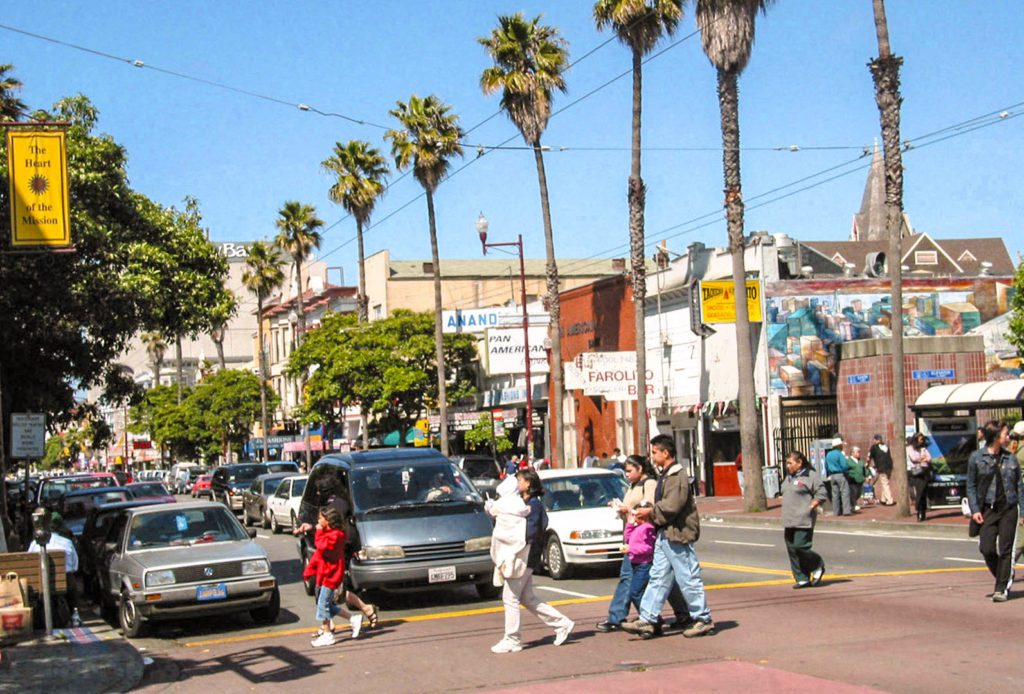When Councilmember Magdalena Carrasco envisions the future of Alum Rock Avenue, she sees a vibrant corridor of people enjoying the sights and sounds, visitors stopping at small businesses and families walking to and from events at Mexican Heritage Plaza.
“We want people to walk, to experience the east side,” Carrasco said. “To nurture the talent that’s already there, but that may need additional support or guidance.”
That’s why Carrasco has proposed a property-based improvement district for the Alum Rock area. She’s worked with the city for years to create some type of business improvement area, but hopes to get it started before the end of her term next year.
Property-based improvement districts are quasi-public entities that collect money from property owners to fund special services for designated areas. Payment amounts are usually set based on each property’s size and collected for both residential and commercial properties.
Carrasco said improvement districts offer benefits to business corridors like Alum Rock Avenue, including safer, cleaner and more vibrant streets.
“It’s a tool that offers great possibilities and great promise to the east side, in terms of the transformative potential,” she said. “We need to get it across the finish line.”
Right now, San Jose’s only property-based improvement district—in operation since 2008—is run by the San Jose Downtown Association. The downtown district funds services such as trash removal, pressure washing sidewalks, beautification and business development.
Creating an improvement district is a time-consuming process, according to Chloe Shipp, director of public space operations for the downtown association. Among the first steps is to hire a contractor to help conduct outreach to businesses and property owners.
Aside from the time, the most challenging aspect of starting an improvement district is making sure all stakeholders have a say, said Shipp.
“You might come up with the right services (but) you might not have property owner support,” she told San José Spotlight. “It’s really important to create those opportunities for feedback throughout the whole process.”
Shipp said her favorite part of the downtown association’s improvement district is Groundwerx, which picks up trash and pressure washes the sidewalks.
Peter Ortiz, public policy advisor for the Alum Rock Santa Clara Street Business Association and candidate for Carrasco’s seat, said he envisions Alum Rock becoming a destination corridor similar to Mission Street in San Francisco.
“I picture Alum Rock as an epicenter of culture and history in East San Jose that attracts visitors from across the Bay Area,” said Ortiz, adding that the area already has many attractive qualities such as diverse cultures, communities of color and family-oriented businesses and services.

Ortiz said the main concern of business owners along Alum Rock Avenue is safety for their customers, in addition to some vacant storefronts that have attracted blight. He said a property-based improvement district could help fund business development programs, such as Prosperity Lab, to help attract vendors to fill empty storefronts.
“What we’re hoping to do is build a partnership with our property owners to make sure that we’re providing opportunities to build new businesses along the corridor,” he said. “The more resources the better, and we see a (property-based improvement district) as a way to address small businesses’ challenges operating in East San Jose.”
Funds for improvement districts could be used to pay for security along Alum Rock Avenue, maintenance of sidewalks and marketing services, Ortiz said. The development of the district is still in the early stages, but businesses are willing to work with property owners to identify a sweet spot of funding for these services.
“From the business standpoint, I can say that we’re interested,” Ortiz said. “We’re open to work with all invested parties, including property owners, to make sure that we find a mutually-benefitting plan for this.”
Funds for property-based improvement districts are collected through property tax rolls, according to city Economic Development Director Nanci Klein. The money is then sent to the city, which stores it in a reserve fund only used for the district.
Klein said Alum Rock is well-suited for a business improvement district. The challenge will be getting it started and getting enough business and property owners to help manage it over time.
“It’s an ongoing, very stressful and joyful set of work,” Klein said. “The more businesses there are engaged, then the more the business district has to draw from in order to keep the leadership highly energized.”
Carrasco said she’s spoken to some business and property owners along Alum Rock Avenue and that some are supportive, while others are “cautiously optimistic.” She said she’d like to see the improvement district up and running by the time the city celebrates the 150th anniversary of Alum Rock Park next year.
“Sometimes it’s difficult to envision this greater vision of what could be when you’re just sitting there working and getting products out the door,” Carrasco said. “If we can get this (district) off the ground and get it across the finish line… I think it would only add to the celebratory atmosphere.”
Contact Sonya Herrera at [email protected] or follow @SMHsoftware on Twitter.



Leave a Reply
You must be logged in to post a comment.